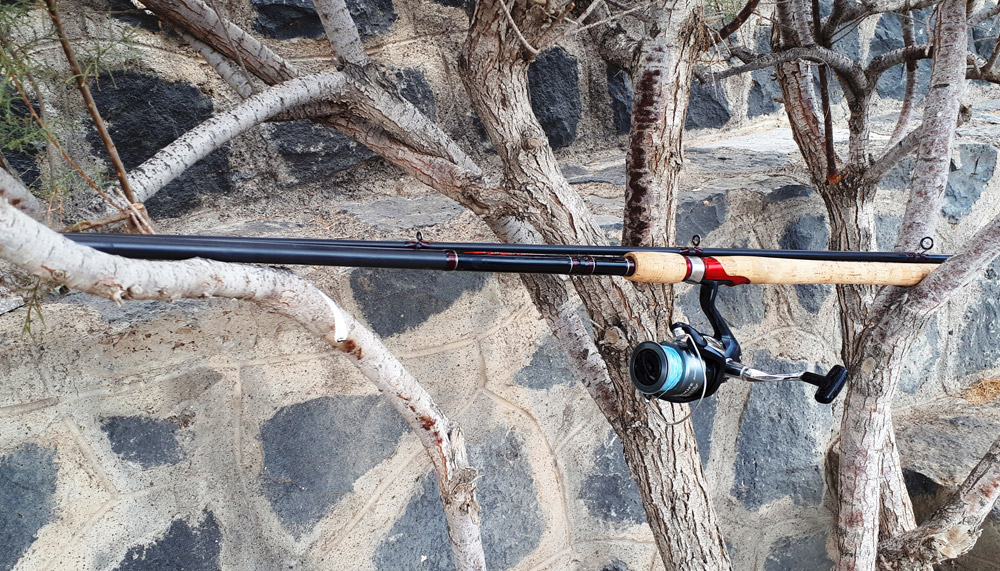
Mastering the Art of the Spin: An Angler’s Comprehensive Guide to Using a Spinning Reel 🎣
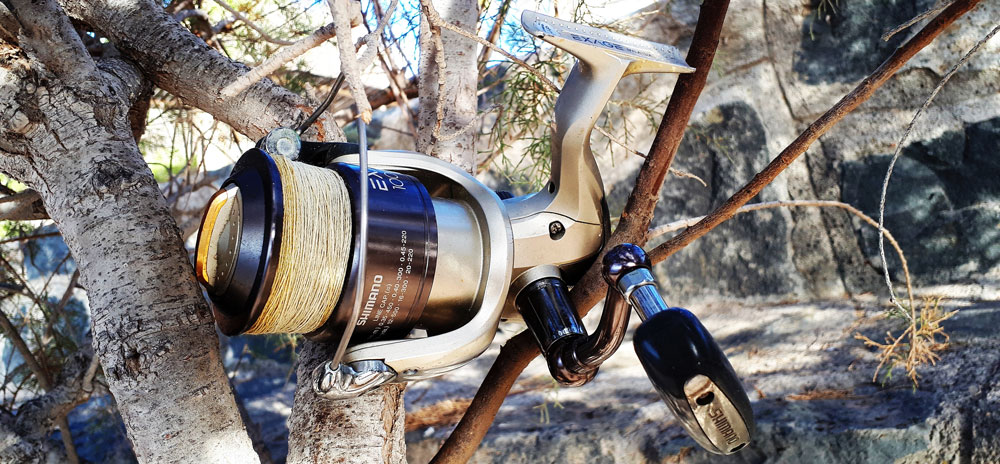
The spinning reel is widely used in different types of fishing and today it is considered the most common and versatile in the entire fishing world. For fishing not only to bring pleasure but also to be successful, it is necessary to use the spinning reel correctly. In this article, I will answer the questions that you probably have. I will answer questions like how to correctly use spinning reels, how spinning reels work, and many others. 🎯
Setting the Reel: Why Mastering the Spinning Reel Matters 🏆
So, why is mastering the spinning reel so important? Well, simply put, the spinning reel is the heart of your fishing gear. It determines how far and accurately you cast, the type of fish you can handle, and ultimately, how many fish you reel in. Given its essential role, a strong working knowledge of a spinning reel can make the difference between a full fishing net and an empty hook. 🎣🏆
In this comprehensive guide, we’re going to reel you through the nuances of a spinning reel – from its basic anatomy, how to choose the right one, setting it up, mastering the art of casting, and reeling in your prize catch. We’ll also venture into advanced techniques and reel maintenance for ensuring a long-lasting, high-performance gear. So, get ready to dive in and elevate your angling skills to the next level. 🚀
Stay tuned, fellow anglers, as we embark on this journey to master the art of the spin! 🐟🌊
Spinning Reel: It’s Simple
The spinning reel is one of the main components of modern predatory fish fishing. Lures of different weights need to be kept at a distance and returned over and over again. In particular, lures with high water resistance or lures that generate strong vibrations put the reel to the test. In addition, we anglers want the device to work flawlessly. This places high demands on the performance and durability of the spinning reel.
Unlike passive standing fishing, spinning is a very active type of fishing. The bait is ejected and re-introduced using a line (braided line) adapted to the type of artificial bait. The fisherman is helped by the minimum possible weight of fishing equipment, consisting of a spinning rod. The load on the spinning reel is compensated by the respective quality of the individual components.
The ball bearings of the spinning reel affect the smoothness of the spinning reel. Only the highest quality ball bearings and gear parts are suitable for these reels. Tolerances should be kept as low as possible to minimize gear play and ensure the best contact with the bait. Spinning reels are available in all price ranges. Some models cost between $700 and $1,000. Spinning reels are also available in the low-cost sector, but they are usually not suitable for long-term use. To truly enjoy spinning, you must be willing to invest $50 or more in a durable spinning reel.
The Inner Workings: Dissecting Your Spinning Reel Piece by Piece 🔎🛠️
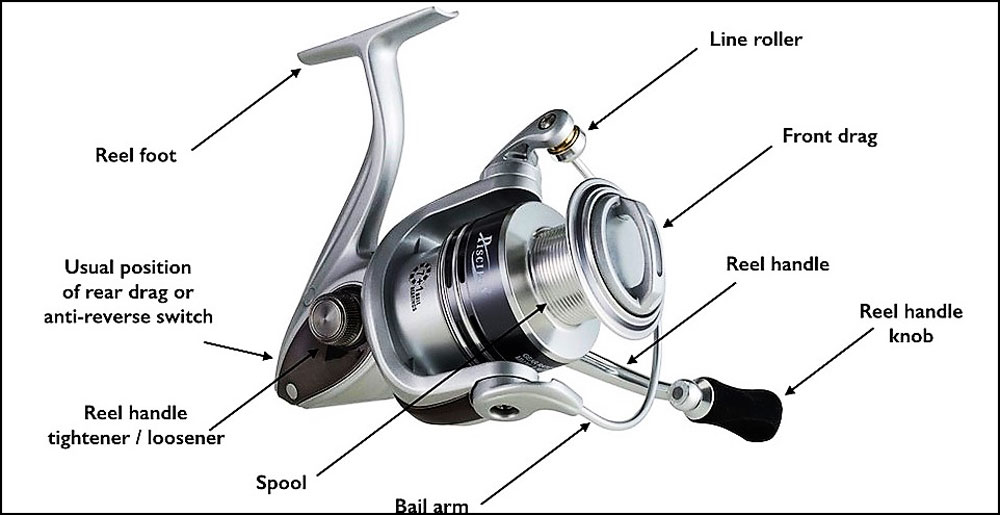
Before we dive headfirst into the nitty-gritty of using a spinning reel, it’s vital to understand the anatomy of this handy piece of fishing gear. After all, to truly master your spinning reel, you need to be familiar with its every nook and cranny. In this section, we’ll break down the various components of a spinning reel, ensuring you have a firm grasp on each part and its function. 🎣💡
1️⃣ Handle
The handle is your primary point of contact with the reel, serving as your control center for reeling in the line or fighting a fish. On most spinning reels, the handle can be switched from one side to the other to accommodate both left and right-handed anglers. 🖐️⚙️
2️⃣ Drag Knob
Situated at the top of the spool, the drag knob plays a crucial role in controlling how much resistance a fish feels when it pulls on the line. By adjusting the drag knob, you can determine the force required to pull line from the reel, which can be instrumental in fighting and landing bigger fish. 🐟💪
3️⃣ Bail
The bail is a metal arm that controls the line’s movement on and off the spool. When the bail is open, the line can be freely cast from the reel. Once the bail is closed, it helps wind the line back onto the spool as you reel in. 🎣🔄
4️⃣ Spool
The spool holds your fishing line. Its size determines the amount and size of the line your reel can accommodate. Larger spools are typically used for bigger fish and deeper waters, where more line is needed. 🧵🌊
5️⃣ Reel Foot
This is the part of the reel that attaches to your fishing rod. It’s essential for ensuring a secure connection between your reel and rod, providing the stability you need when casting or reeling in a catch. 🎣🔒
6️⃣ Line Roller
As the name suggests, the line roller is where your fishing line rests during both casting and retrieval. It ensures a smooth and even reeling of the line, preventing tangles and knots. 🧵🔃
🔶Understanding these components and their functions allows you to use your spinning reel effectively and troubleshoot any potential issues that might arise. With this knowledge at your disposal, you’re well on your way to becoming a spinning reel maestro! 🏆🎶
Your Perfect Match: Selecting the Ideal Spinning Reel for Your Fishing Adventures 🎣🔍
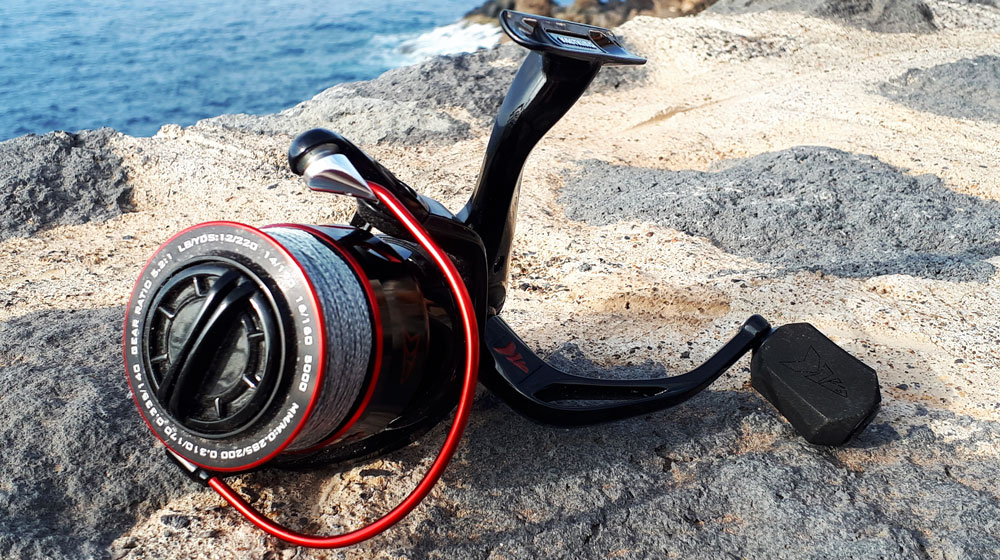
Now that you’re familiar with the anatomy of a spinning reel, the next step is to choose the right one that fits your needs. Much like picking out a new car, there’s more to a spinning reel than meets the eye. Several factors come into play, and understanding these can make a world of difference to your angling experience. Let’s take a closer look at what you need to consider when selecting your perfect spinning reel. 🧐📝
1️⃣ Size. The size of the reel should be directly proportional to the size of the line you intend to use. For lighter lines, opt for a smaller reel, and conversely, for heavier lines, choose a larger reel. It’s essential to match your reel size to your line to ensure optimal performance and durability. 🎣⚖️
2️⃣ Material. The material of the reel significantly impacts its durability and weight. Typically, spinning reels are made of aluminum, graphite, or a combination of both. While aluminum reels are sturdier, they tend to be heavier. On the other hand, graphite reels are lighter and more corrosion-resistant, making them ideal for saltwater fishing. 🌊🏋️♀️
3️⃣ Ball Bearings. The quantity and quality of ball bearings contribute to the smoothness and stability of the reel’s operation. Generally, a higher number of quality ball bearings translates to a smoother reel performance. So, it’s worth investing in a reel with good-quality ball bearings. ⚙️👌
4️⃣ Gear Ratio. The gear ratio indicates the speed at which you can retrieve the line. A higher gear ratio retrieves the line quicker, while a lower gear ratio provides more power. Your choice should depend on the type of fishing you’re planning on doing. For instance, a higher gear ratio would be ideal for fast-retrieval fishing styles like spinnerbaiting. ⚡💨
🔶Choosing the right reel is all about identifying what works best for you, considering your fishing style, target species, and personal comfort. Always remember, the reel that feels right in your hands, aligns with your angling goals, and doesn’t break the bank is the ideal reel for you. 🎣🎯
Ready, Set, Reel: Assembling and Setting Up Your Spinning Reel for Success 🛠️📈
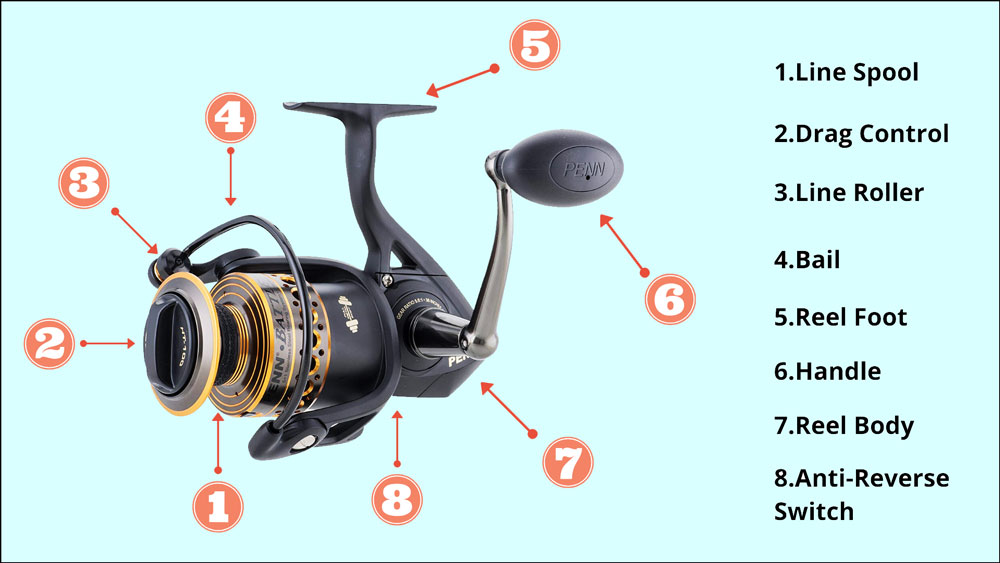
You’ve chosen your perfect reel. Now, it’s time to set it up for action! Correctly setting up your spinning reel is crucial for a smooth and successful fishing experience. Let’s break it down into easy, step-by-step instructions, ensuring your reel is ready to make a splash. 💦🎣
1️⃣ Attach the Reel to the Rod
Begin by unscrewing the reel seat on the rod handle, place the reel foot into the seat, and tighten the screws until the reel is secure. Ensure that the reel sits firmly without wiggling or slipping. 🎣🔩
2️⃣ String the Line
Open the bail arm and tie the end of your fishing line onto the spool using an Arbor knot. Make sure the knot is tight and secure before trimming any excess line. Close the bail, and start winding the handle to spool the line onto the reel. Ensure the line is loaded evenly and tightly. 🧵💪
3️⃣ Set the Drag
Adjust the drag knob at the top of the reel to set the resistance. A good starting point is to set it at a point where it offers some resistance but still allows the line to be pulled out with a solid tug. Remember, setting the drag too tight can lead to broken lines, while too loose might not tire the fish effectively. ⚙️👍
4️⃣ Test Your Setup
Give your setup a quick test. Make sure the line casts smoothly and retrieves without any hitches. This step ensures that you’re ready to hit the waters without any surprises. 🎣👀
🔶Remember, the key to maintaining the optimal condition of your reel is regular cleaning and appropriate storage. After each use, lightly rinse your reel with fresh water, dry thoroughly, and store it in a cool, dry place. And don’t forget, a little reel oil at the end of the season goes a long way in ensuring smooth performance for your next fishing adventure. 🧽💦
With your reel set up and ready, you’re one step closer to landing that dream catch. 🐠🎉
Launch Your Line: Mastering the Art of Casting with a Spinning Reel 🚀🎣
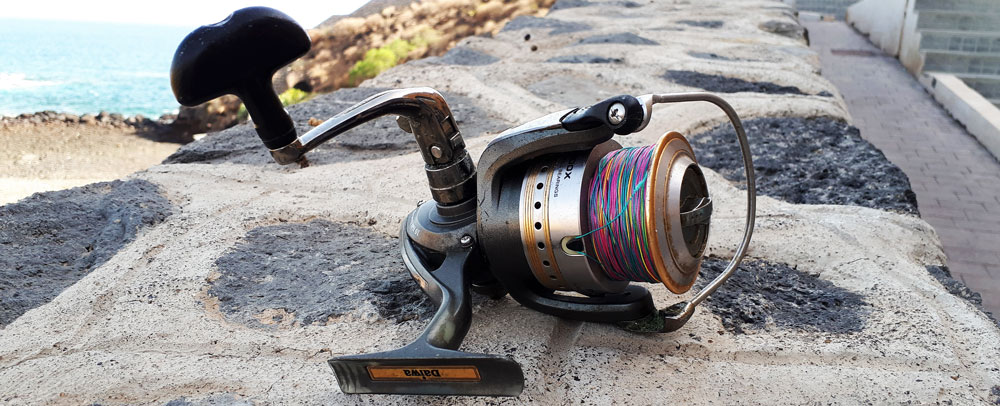
Now that you’ve set up your reel, it’s time to get that line in the water! Casting is the first step to catching that trophy fish, and it’s not just about flinging the line as far as you can. Proper technique can make a big difference in where and how your bait lands. So, let’s jump in and explore the art of casting with a spinning reel. 👨🎨🌊
1️⃣ The Casting Technique
Hold your rod with your dominant hand and place your index finger on the line. Open the bail arm, and ensure the line is under the control of your finger. Aim towards your target area, and in a swift, smooth motion, bring the rod overhead and release your finger, letting the line sail out towards the target. Remember, the timing of your line release significantly influences the accuracy of your cast. 🎯⏱️
2️⃣ After the Cast
After the lure hits the water, promptly close the bail arm manually. This prevents any unwanted line unwinding, ensuring you’re ready to start reeling in at any moment. It’s always a good idea to keep a keen eye on your line and be ready for a bite! 👀🐟
3️⃣ Common Casting Mistakes and Corrections
Problem: The line fails to launch or doesn’t go far.
Solution: This issue usually arises due to premature release of the line. Practice timing your release for optimal distance.
Problem: The line tangles or birdnests during casting.
Solution: This typically happens if the bail is closed too soon or if the reel is overfilled with line. Keep the bail open until the line has landed, and maintain an appropriate amount of line on your reel.
Problem: The lure lands off-target.
Solution: Aim a little higher or lower, depending on whether you’re overshooting or undershooting your target. Practice casting in various conditions to get a feel for adjusting your aim as necessary.
You need to wind up the fishing line by rotating the reel, depending on the type of your wiring. If you want to fish along the bottom, wait for the bait to fall to the bottom, keeping the line in tension, after falling to the bottom, the line will sag a little, at this moment you need to start wiring. If you want to fish from above, you need to start wiring immediately after the bait falls into the water and a quick reel.
Remember, the key to successful casting is practice and patience. Keep refining your technique, learn from your mistakes, and soon you’ll be casting like a pro, hitting your mark with every launch. Get ready to cast off into a world of exciting angling adventures! 🏆🌍
The Big Pull: Best Practices for Reeling in Your Catch 🎣💪
Congratulations, you’ve cast your line perfectly, and a fish has taken the bait! Now comes the most thrilling part of the process – reeling in your catch. It’s not merely about winding the line back in; it’s a battle of wills between you and the fish. Let’s explore how to do it right, focusing on the crucial role of the drag system and how to tackle larger, more robust catches. 🐟👑
1️⃣ Understand Your Drag System
The drag system on your spinning reel is your best friend during this stage. When a fish pulls hard on the line, the drag system allows the line to be pulled out, preventing it from breaking. Always set the drag before you start fishing, and remember, it’s better to start with a lighter drag setting and tighten it gradually if necessary. Always be ready to adjust the drag during the fight to prevent a snapped line or a lost fish. 🏋️♀️⚙️
2️⃣ The Art of Reeling
Once you’ve hooked a fish, start reeling in. Keep a firm grip on your rod, and keep it angled towards the fish. The idea is to tire the fish out. If the fish swims towards you, reel in faster to keep the line tight. If it swims away, let it pull line out and tire itself. Once the fish starts to slow down, it’s your signal to start reeling it in. Remember, reeling is a smooth, steady process – jerky movements can cause the hook to dislodge. 🐟💤
3️⃣ Battling the Big Ones
When it comes to larger, stronger fish, patience is key. These catches are likely to put up a more significant fight and pull out more line. Don’t panic! Keep your drag setting checked, maintain a firm grip, and let the fish tire itself out. Use the weight of your rod to apply pressure and guide the fish towards you. With larger fish, the catch process can take longer, but the thrill of landing a big one is worth every minute. 🐠🏆
🔶With these techniques in your angler’s arsenal, you’re all set to reel in even the most stubborn of fish. Remember, it’s all about understanding your equipment and staying patient during the fight. The feeling of successfully reeling in a catch is second to none, so get out there, and enjoy every moment of your angling adventure. 🎣🎉
Take the Plunge: Exploring Advanced Spinning Reel Techniques 🎣🚀
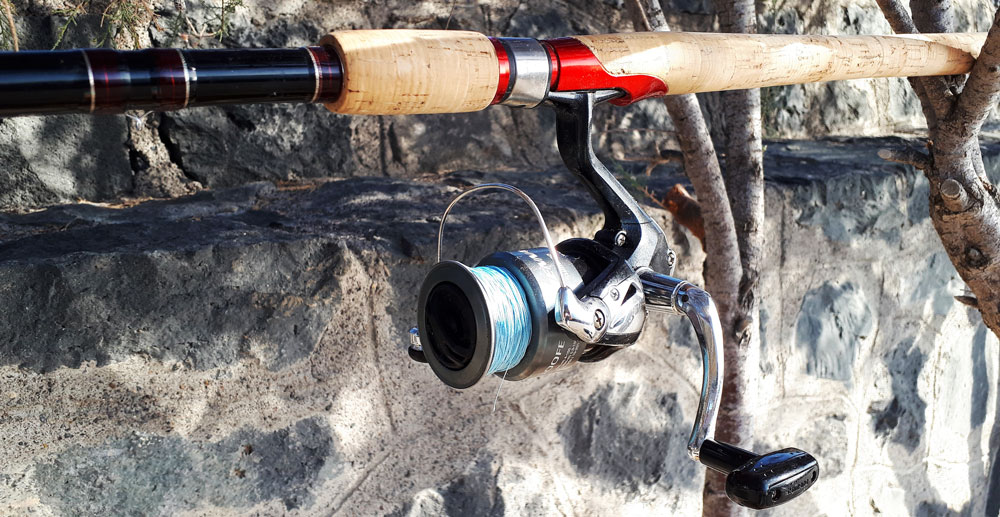
Once you’ve mastered the basics of using a spinning reel, it’s time to venture into more advanced techniques. Flipping, pitching, long casting, and finesse fishing can add new dimensions to your angling adventures, allowing you to adapt to different fishing conditions and target species. So, let’s dive in and explore these advanced spinning reel techniques and learn when and where to use them for maximum efficiency. 💡🌊
1️⃣ Flipping and Pitching 🔄🎯
Flipping and pitching are techniques used to place your bait accurately in tight spots, typically under overhanging cover or amongst dense weeds where larger fish tend to lurk.
Flipping: To flip, reel your lure close to the rod tip, hold the line with your free hand, and smoothly swing your rod so the lure pendulums towards your target. It’s an excellent technique for short, accurate casts in heavy cover.
Pitching: For pitching, hold your lure and let out enough line that it reaches the reel. Swing the lure gently to release it towards your target. This technique allows for a quiet, splash-less entry of the bait, perfect for not spooking skittish fish.
2️⃣ Long Casting 🏹🌅
Long casting, as the name suggests, allows you to cast your bait over greater distances, reaching fish that are further out or in deeper water. This technique requires a bit of practice, but once mastered, it can significantly increase your fishing range. Remember to select a longer rod, use a lighter line, and perfect your casting motion for achieving maximum distance.
3️⃣ Finesse Fishing 🕵️♀️🌾
Finesse fishing is all about subtlety and deception. It involves using lighter lines, smaller baits, and making slower, deliberate movements to trick wary or inactive fish into biting. It’s particularly effective in heavily fished waters or when fishing conditions are tough. Patience and precision are key to finesse fishing.
Knowing when and where to utilize these techniques can make a significant difference in your fishing experience. Flipping and pitching are perfect for places with heavy cover, long casting works great for surf fishing or when fishing in deep water, and finesse fishing is ideal for high-pressure waters or during unfavorable conditions.
🔶Mastering these advanced techniques will elevate your angling skills, ensuring you’re well-prepared for any fishing scenario. 🐠🎉
How To Wind Line On A Spinning Reel?
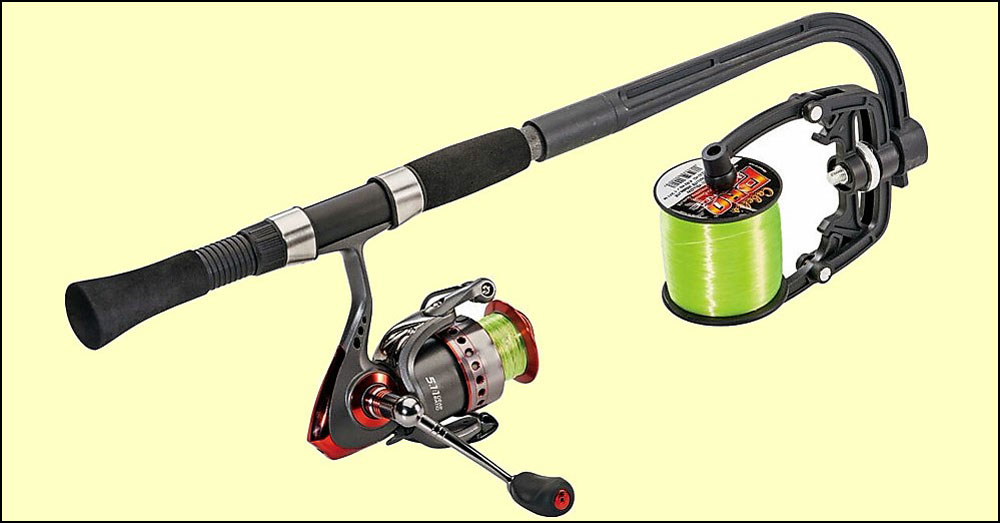
Winding a fishing line on a reel is an important stage in the process of preparing a spinning rod for fishing because mistakes in this can lead to the fact that at the most interesting moment good catch will fall off the hook.
Winding should be done without too much tension, but not too loosely. The line should be tightly wound. The direction of winding should be parallel to the rotation of the spool.
The amount of line is such that the reel is filled. The line reserve, taking into account the casting distance, should be approximately 20%.
You can attach the line to the spool using a knot, or you can simply hook the line or cord to a stopper that can be on the spool. Some models of reels, instead of a stopper, have a special clip for which the fishing line is fixed and then the winding of the required amount simply begins.
You can fix the line on the spool using a knot in this way:
- Make one full turn of the line around the spool.
- One end must be passed through the line, which is mainline, thus forming a loop.
- Around the base, make 3-4 full turns of the line, which will eventually form a loop.
- At the beginning of the twist, pass the end of the line through and tighten with a knot. The excess end of the line can be cut off.
This is a small knot, but strong and doesn’t interfere with the further winding of the line on the spool.
There are three main ways to wind a line:
- Cylindrical
- With a slope
- Chaotic
Step-By-Step Instructions For Winding Fishing Line On A Spinning Reel
The cylindrical method is the simplest since here the whole winding consists of incorrectly fixing the line on the spool (using one of the above methods) and winding the line evenly along the entire length of the spool. As a result, you should have a cylinder. Due to its simplicity, this type of winding is the most common.
Slope winding:
- Fix the end of the line with a knot or with a stopper on the spool.
- Winding starts: with variable pitch, which decreases towards the bobbin wall. Thus, it turns out that near the wall of the fishing line there will be more, which is similar in shape to a cone.
- Chaotic winding
This method is used only on spools, it should not be used. The meaning of such a winding is that here the turns are superimposed as they will come out, without any specific system. In the process of fishing, this can lead to entanglement and breakage of the line, involuntary descent.
Winding on a reel of fishing line is carried out according to the following algorithm:
- A reel must be installed in the reel seat of the spinning rod.
- The line is tied in a knot as described above, or secured to a stopper. The bail must be open in this case.
- The winding process starts: the line of the line guide is lowered. The line from the reel should come off smoothly, and not fly off in turns, otherwise, it can get confusing. In the process of winding with one hand, you need to hold the ring already wound on the spool, adjusting the winding force so that the winding doesn’t come out weak, but not too tight.
- Make sure that the line doesn’t reach the edge of the sides 2-3 mm.
- After the end of the winding, the end of the line must be inserted into the clip, which is located on the side of the bobbin.
The Art of Care: Essential Spinning Reel Maintenance Tips 🧽🔧
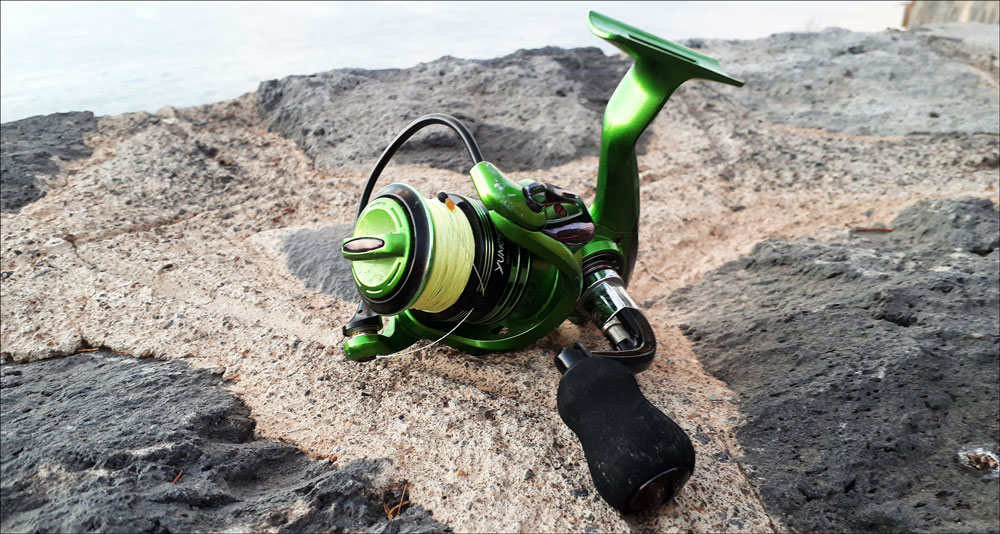
Just like any other piece of equipment, your spinning reel needs regular care and maintenance to ensure its longevity and optimal performance. Proper maintenance not only keeps your reel running smoothly but can also save you from unexpected equipment failures while you’re out on the water. So, let’s explore some essential maintenance practices, from cleaning and lubrication to storage, to keep your reel at its peak. 👌💫
1️⃣ Cleaning Your Spinning Reel 🛁✨
Regular cleaning helps prevent dirt and salt buildup, which can cause damage over time. Here’s how to do it:
- After Each Use: Rinse your reel gently with fresh water to remove any salt, dirt, or grime. Dry thoroughly before storage.
- Deep Cleaning: Every few months, depending on usage, disassemble the reel as per the manufacturer’s instructions and clean each part carefully. Use a soft brush and mild detergent for stubborn grime. Ensure all parts are completely dry before reassembling.
2️⃣ Lubrication: The Lifeblood of Your Reel 🛢️🏎️
Proper lubrication ensures smooth operation and prevents wear and tear. Use a high-quality reel oil and grease. Apply oil to the bearings and grease to the gears and other moving parts. Remember, a little goes a long way, so don’t overdo it.
3️⃣ Proper Storage for Longevity 🏠🔐
Store your reel in a cool, dry place away from direct sunlight. If storing for an extended period, loosen the drag to relieve pressure on the washers. Consider using a reel cover for extra protection.
As for product recommendations, popular choices for reel care include Penn’s Reel Cleaner and Lubrication Combo, Shimano’s maintenance kit, and Abu Garcia’s reel maintenance products. Always follow the manufacturer’s guidelines for maintenance to ensure the best results.
🔶Your spinning reel is a precious investment, and with these maintenance tips, you can ensure its long life and performance. After all, a well-maintained reel is the foundation of a successful fishing trip. 🎣🥳
❓ Frequently Asked Questions: How to Use a Spinning Reel 🎣❓
🔶Remember, these are guidelines, and fishing is as much an art as it is a science. Practice and experience will guide you towards the best reel, line, and techniques for your personal style and local conditions. 🌟🎣
Reeling It All In: Concluding Thoughts 🎯🎉
A spinning reel is a mandatory attribute, without which the spinning tackle won’t function. The main characteristics of this device directly affect the quality of fishing and casting distance. This reel will allow you to master various fishing techniques. You can easily master them, but you may have difficulties while using such a reel. I really hope that this article has helped you understand how a spinning reel works, and also you have found answers to your questions.
And that’s a wrap! We’ve journeyed together from the basic anatomy of a spinning reel, right up to advanced techniques and essential maintenance practices. We trust that you now have a comprehensive understanding of how to use a spinning reel and are eager to put your newfound knowledge into practice! 🧠💪
To quickly recap, we’ve covered:
- The fundamental parts of a spinning reel and their functions 🎣🔍
- How to select the right spinning reel based on your fishing goals and species you’re targeting 🎯🐠
- The step-by-step setup process to get your reel ready for the waters 🧩🌊
- The art of casting, ensuring you make the most of every throw 🤾♂️🎯
- The techniques to reel in your catch, including how to tackle larger, stronger fish 🏋️♀️🐟
- Advanced skills to enhance your fishing experience, such as flipping, pitching, long casting, and finesse fishing 🚀🌌
- The essential care and maintenance practices for your spinning reel, including product recommendations 🔧✨
🔶Remember, practice makes perfect. So, don’t be disheartened if your first few casts don’t go as planned, or if that big catch slips away. Keep at it, and you’ll soon see improvements. The more you use your spinning reel, the more familiar you’ll become with its nuances and capabilities.
And most importantly, never forget the joy and relaxation that fishing brings. It’s not just about the catch, but also about the serenity of nature and the thrill of the chase. So, get out there, soak in the experience, and reel in some great memories! Happy casting, anglers! 🏞️🎣🎉
Tags: #how to use a spinning reel / #how to use a spinning reel review / #how to use a spinning rod and reel review / #how to use a spinning reel for beginners / #how to clean a spinning reel for saltwater use / #how to correctly use a spinning reel

I live in Tenerife (Canary Islands) for the last 10+ years and share my daily fishing experiences on my website. Many years of personal experience as a fisherman and the vast experience of my friends allow me to write professionally on any fishing topics (from choosing a flashlight and equipment to deep-sea fishing).
All of my advice is based on practical real-world experience and will be useful to both novice anglers and professionals. Read more about the author.
Affiliate Disclosure: FishReeler.org sometimes gets paid for listings, through sponsors or affiliate programs like Amazon, Ebay, Cabelas, Bass Pro Shop, Shimano, Daiwa, Rapala, Renn, Okuma, KastKing, etс. Clicking a link helps keep FishReeler.org free, at no extra cost to you!
About the author: Each article is verified by the fishing expert Sergio Smirnoff. The articles are written by professional and amateur fishermen with 20+ years of fishing experience.
Note: The views and opinions expressed in this article are those of the authors and do not necessarily reflect the official policy or position of any agency. The articles are for informational purposes only, share your opinions in the comments and join the fishing discussions, let's share our fishing experiences together!

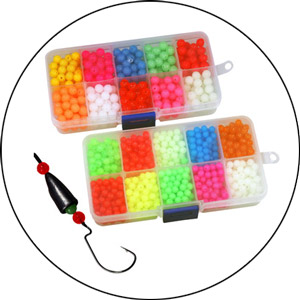
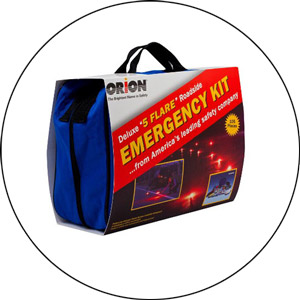
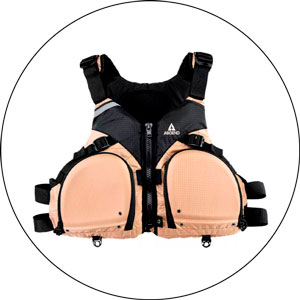
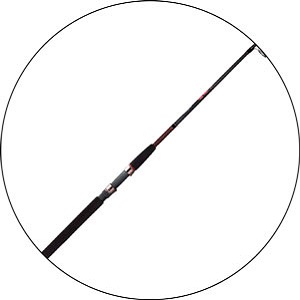
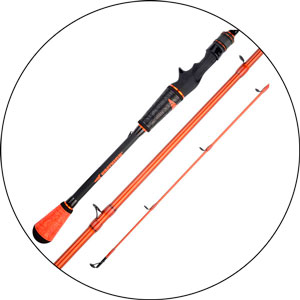
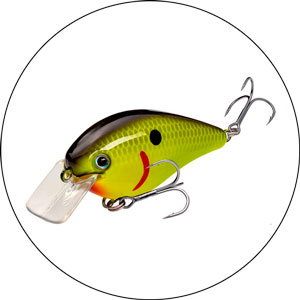
Thank you for this article! I have always used a baitcasting reel and was hesitant to try a spinning reel. This article provided easy-to-follow instructions on how to use a spinning reel, making the transition from a baitcasting reel much easier. Now I can expand my fishing options and try new techniques with my spinning reel.
I have been fishing for years and found this article to be very informative. I learned a few tips and tricks on how to improve my technique, such as properly positioning the bail arm and using the drag system. These small adjustments can make a big difference in catching more fish and preventing line tangles.
This is a great article for beginners! I just got into fishing recently and had no idea how to use a spinning reel. This article provided clear and concise instructions on how to use a spinning reel properly. Now I feel confident enough to head out to the water and give it a try.
I think Ugly Stiks are a solid choice if you’re worried about durability, but they do lack sensitivity. For younger anglers, they might be the way to go. However, if you’re looking for more sensitivity, I suggest checking out the Shimano Sellus or Daiwa Aird-X rods.
As for reels, if you want to stay around the $50 mark, the Daiwa Regal LT, Revros LT, or the Shimano Sahara are all great entry-level options that won’t break the bank.
If you’re considering an Ugly Stik, I would recommend going for a 6’6 medium power rod. It’s a good middle ground that can handle most situations, and anything lighter may not be suitable for bigger fish. Personally, I prefer not to go below medium action.
For a reel, I highly recommend the Pflueger President. I recently bought one on sale, even though I don’t use spinning reels much anymore. To give you an idea of its durability, I accidentally caught a 4-foot alligator gar while river fishing with an Ugly Stik GX2 combo, and the President reel had no issues handling it. While the Shakespeare reel may work, it’s not as high quality as the President.
As someone who grew up fishing in the Great Lakes but is now navigating the rivers of the Carolinas, I can say that river fishing definitely has its differences. I recently took my little girl out for our first fishing trip together and while we only had an hour or so to fish, we had a few bites but didn’t catch anything.
I’ve been doing some research and am considering setting up a Carolina Rig, but I’m hesitant to use it with my daughter as it has a lot of leadership lines and I worry about her accidentally hooking herself or me. Do you have any tips for a safer setup for kids? Currently, she’s using a bobber with a simple rubber grub-like lure on a hook and about 2 feet of the line after the bobber.
Growing up, I always used live worms as bait, but my daughter is not a fan, so I’m looking for other options to keep the experience positive for her.
Here are some models of spinning rods and reels that are great for beginner anglers:
Shimano Solora 2-Piece Spinning Rod: This is a great option for those just starting out. It’s a 6’6″ medium power rod that’s versatile and easy to handle.
Ugly Stik GX2 Spinning Rod: Another great choice for beginners, the Ugly Stik GX2 is known for its durability and sensitivity. It comes in a variety of lengths and powers to suit different needs.
Okuma Cedros CJ-65S Spinning Reel: This is a reliable spinning reel that’s great for beginners. It has a smooth drag system and can handle larger fish.
Penn Battle II Spinning Reel: This is a popular spinning reel for beginners and experienced anglers alike. It’s built to last and can handle a variety of fishing conditions.
KastKing Sharky III Spinning Reel: This is a great budget-friendly option for beginners. It has a smooth drag system and is built to last.
Remember, the best spinning rod and reel for a beginner depends on their specific needs and the type of fishing they plan to do. It’s important to do research and get advice from experienced anglers before making a purchase.
I just wanted to share my recent purchase of a Daiwa spin-cast reel from Tackle Warehouse. It was a pretty inexpensive option, but since it’s a brand I trust, I felt confident in my choice. I plan on giving it to my wife as a Christmas present, although it won’t be the main gift since she has a bit of a love/hate relationship with my fishing habit.
Looking back, I wish I had purchased the Black Max Abu Garcia combo as a beginner. I made the mistake of buying used Pflueger and Abu Garcia bargain rods when I first started out, and unfortunately, my Pflueger reels have since broken. It’s been tough finding someone locally who will repair them, as they only fix specific brands.
It’s frustrating to have two dead reels that I’ve caught my biggest fish on just sitting there. I recently invested heavily in nicer gear, but with the late fall and early winter weather, fishing has become quite challenging. It’s weighing on me, especially since I’ve spent so much on gear and I’m not having much luck.
If you’re just starting out and looking for a mid-range spinning rod and reel combo, I highly recommend the Pflueger Trion or President reels in a 3000 or 3500 size, paired with an Ugly Stik GX2 rod in a 6’6″ medium action. You don’t need to spend $200 on a combo when you’re just starting out. Stick with a spinning reel for around $50 and a rod for around $50, and you should be good to go.
Baitcasting reels can be more difficult to learn, so I suggest starting with a spinning reel. I’ve been fishing about 12 hours a week year-round with my main setup, which is a Pflueger Trion 30 and a Fenwick Eagle 7′ medium rod.
The total cost of my setup was around $110, and I’ve caught fish up to 15lb striped bass on it. I find that the medium action is a good all-around choice, as it’s soft enough to throw light baits but still has enough backbone to handle bigger fish.
If you’re struggling with wind knots and tangling on your spinning reel, fear not! Here are some tips to prevent those pesky knots and keep your line running smoothly.
First and foremost, spool your line correctly. DO NOT roll it off the spool. Instead, pull it off the side of the spool with the label facing you. This is the correct way for every spinning reel and brand of line that I’ve tried. If you’re not comfortable doing it yourself, have it done professionally?
When using a braid, make sure your line is very tight. Most spooling machines can’t achieve this, so I recommend tying off a couple of ball-bearing swivels inline and walking the line off, then reeling it back on as tight as you dare. The line should feel absolutely solid with your thumbnail – no give at all.
Always close the bail by hand. Every time you close the bail by cranking the handle, you’re adding a twist to the line.
Stop the line by placing your finger on the spool lip just as your lure or bait hits the water.
Lift your rod tip to remove the slack from the line before you start reeling.
Never turn the handle while a fish is taking a drag. When you’re turning the handle and not gaining the line, you’re twisting the line with every revolution.
Your reel twists the line as it puts it on the spool and untwists it as it comes off. When the line is pulled off your reel from the drag without the rotor turning, you’re getting unintentional twists. During your day of fishing, if you lose a lot of drag, you’ll want to do the ball-bearing swivel trick again and go at least as deep into the spool as the fish did.
If you’re looking for a versatile rod that can handle a variety of fishing needs, I recommend a 7′ medium power, moderate to moderate fast action rod. I prefer two-piece rods that can break down into two shorter sections for easier transport. While some people suggest shorter rods for beginners, I find that a longer rod can help with longer casts and handling big fish.
For a budget-friendly option, I recommend the Ugly Stik rods. They’re durable and perfect for beginners. If you have a bit more money to spend, I recommend checking out Fenwick Eagle rods. They’re lightweight, well-made, and come with a great warranty.
Pair your chosen rod with a 2500 or 3000 series reel, such as the Pflueger President or Shimano Sedona. For the line, I recommend braiding with a fluorocarbon leader. However, if you’re not experienced with braid, mono is easier to work with.
If you’re targeting trout, I suggest a medium-light rod, but a medium will work well for catfish. For line, I recommend a 15-20# braid with a 10#ish fluorocarbon or mono leader. If you’re not using braid, 10-15# mono or fluorocarbon will work well for both trout and catfish.
If you’re looking to get into fishing, I’d suggest going for a spinning rod. There are plenty of options available at every price point, and the differences between them are generally quite minor.
The first step is to establish a budget. It doesn’t need to be a large one, and I’d recommend allocating around $50-100 for a rod/reel combo, and then another $50-100 for lures, tools, and gear.
When it comes to selecting a rod and reel, look for a Medium or Medium-Light action, and a length between 6′ and 7′ (depending on your height and personal preferences). A good option for beginners is pre-packaged “combos” that include both a rod and reel.
I would highly recommend finding a local bait and tackle shop to purchase your gear from. They can offer valuable advice and tips, and help you navigate through all the marketing nonsense out there. Although you may pay slightly more than if you were to shop online, building a relationship with the shop is invaluable.
In my experience, it’s always best to start with a local tackle shop. While it might seem like you’re paying a bit more than online, the benefits are huge. Not only can they help you figure out what you need, but they can also give you tips and tricks for your specific area. The relationship you build with them is important, and they’ll help you in the long run.
Having someone local to fish with is even better. They can teach you the ins and outs of fishing, and you’re much more likely to catch something on your first few trips. Starting off with a spinning setup is a good idea. If you’re buying the reel and rod separately, it’s better to spend more on the reel than the rod. A cheap reel can ruin your day, while a cheaper rod is less likely to make a difference.
If you’re looking for a rod, I suggest the Ugly Stik. They’re a good beginner rod, and they’re fairly affordable. While they might not be the best rods out there, they’re definitely tough and will last you a while.